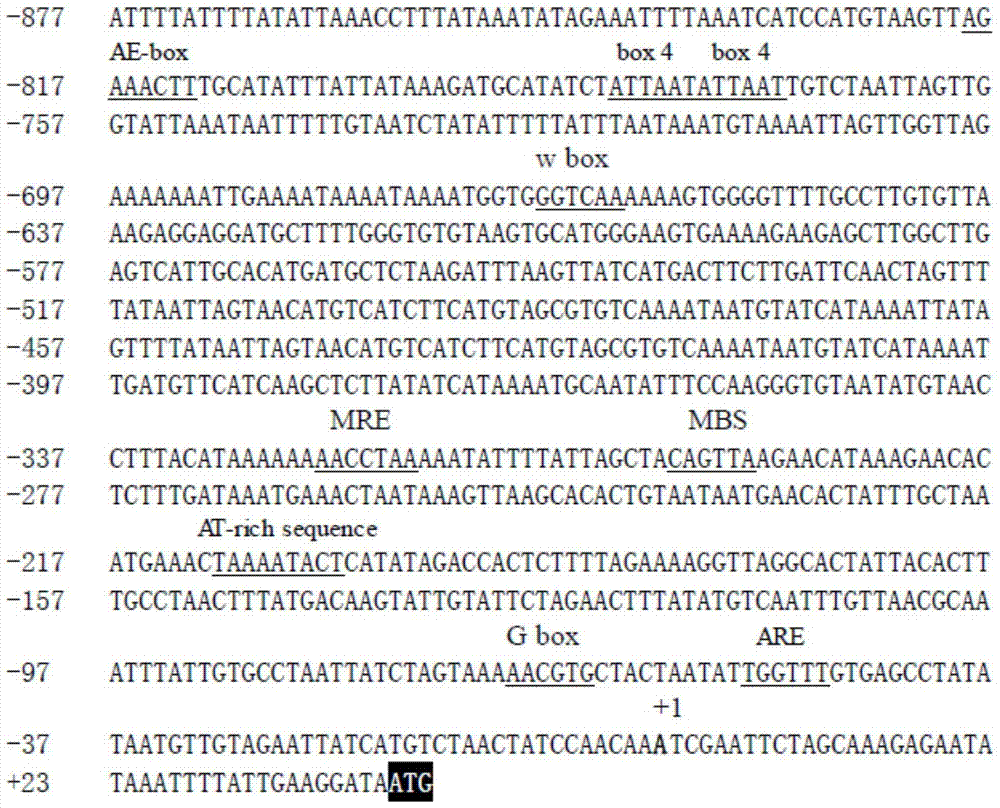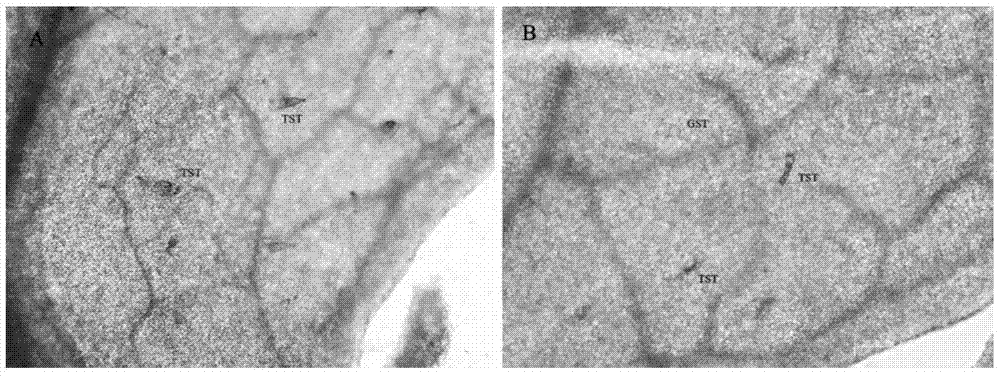A promoter regulating gene expression in non-secreting glandular trichomes and its application
A non-secretory glandular hair and gene regulation technology, applied in the field of promoters, can solve problems such as excessive consumption of cellular substances and energy, regulation of target genes in time and space, and normal growth burden of plants.
- Summary
- Abstract
- Description
- Claims
- Application Information
AI Technical Summary
Problems solved by technology
Method used
Image
Examples
Embodiment
[0038] This embodiment relates to the acquisition of the AaADH2 gene promoter, which specifically includes the following steps:
[0039] Step 1. Cultivate aseptic seedlings of Artemisia annua
[0040] Artemisia annua seeds were soaked in ethanol with a volume fraction of 75% for 1 min, then soaked in 20% (w / v) NaClO for 20 min, rinsed with sterile water for 3 to 4 times, blotted the surface moisture with sterile absorbent paper, and inoculated Cultivate on a hormone-free MS solid medium at 25°C under 16h / 8h (light / dark) light, and after 14 days, you can obtain an Artemisia annua sterile vaccine;
[0041] Step 2: Cloning of the promoter sequence in the genomic DNA
[0042] Step 1. Cultivate aseptic seedlings of Artemisia annua
[0043] Artemisia annua seeds were soaked in ethanol with a volume fraction of 75% for 1 min, then soaked in 20% (w / v) NaClO for 20 min, rinsed with sterile water for 3 to 4 times, blotted the surface moisture with sterile absorbent paper, and inoculat...
PUM
 Login to View More
Login to View More Abstract
Description
Claims
Application Information
 Login to View More
Login to View More - R&D
- Intellectual Property
- Life Sciences
- Materials
- Tech Scout
- Unparalleled Data Quality
- Higher Quality Content
- 60% Fewer Hallucinations
Browse by: Latest US Patents, China's latest patents, Technical Efficacy Thesaurus, Application Domain, Technology Topic, Popular Technical Reports.
© 2025 PatSnap. All rights reserved.Legal|Privacy policy|Modern Slavery Act Transparency Statement|Sitemap|About US| Contact US: help@patsnap.com



